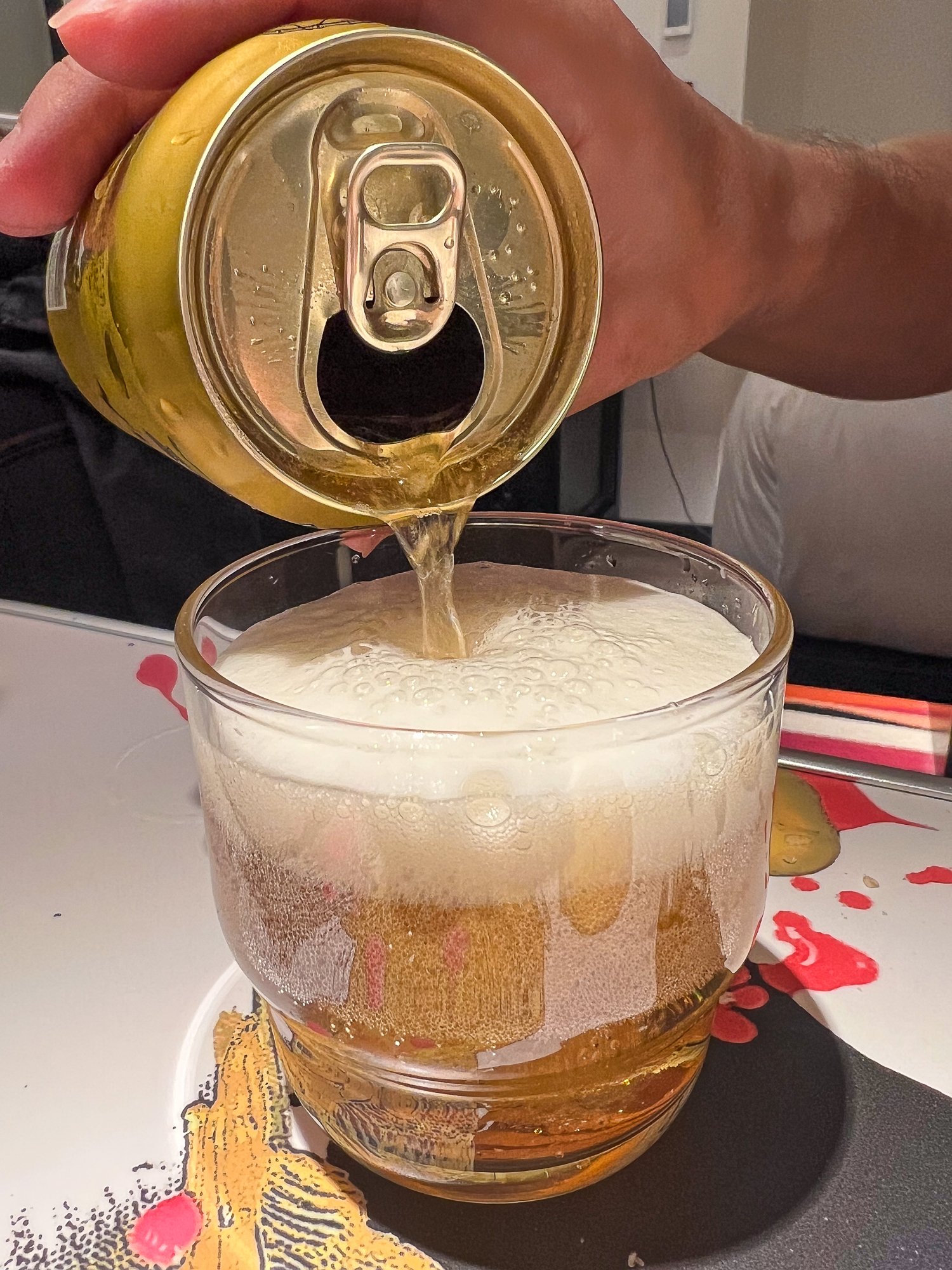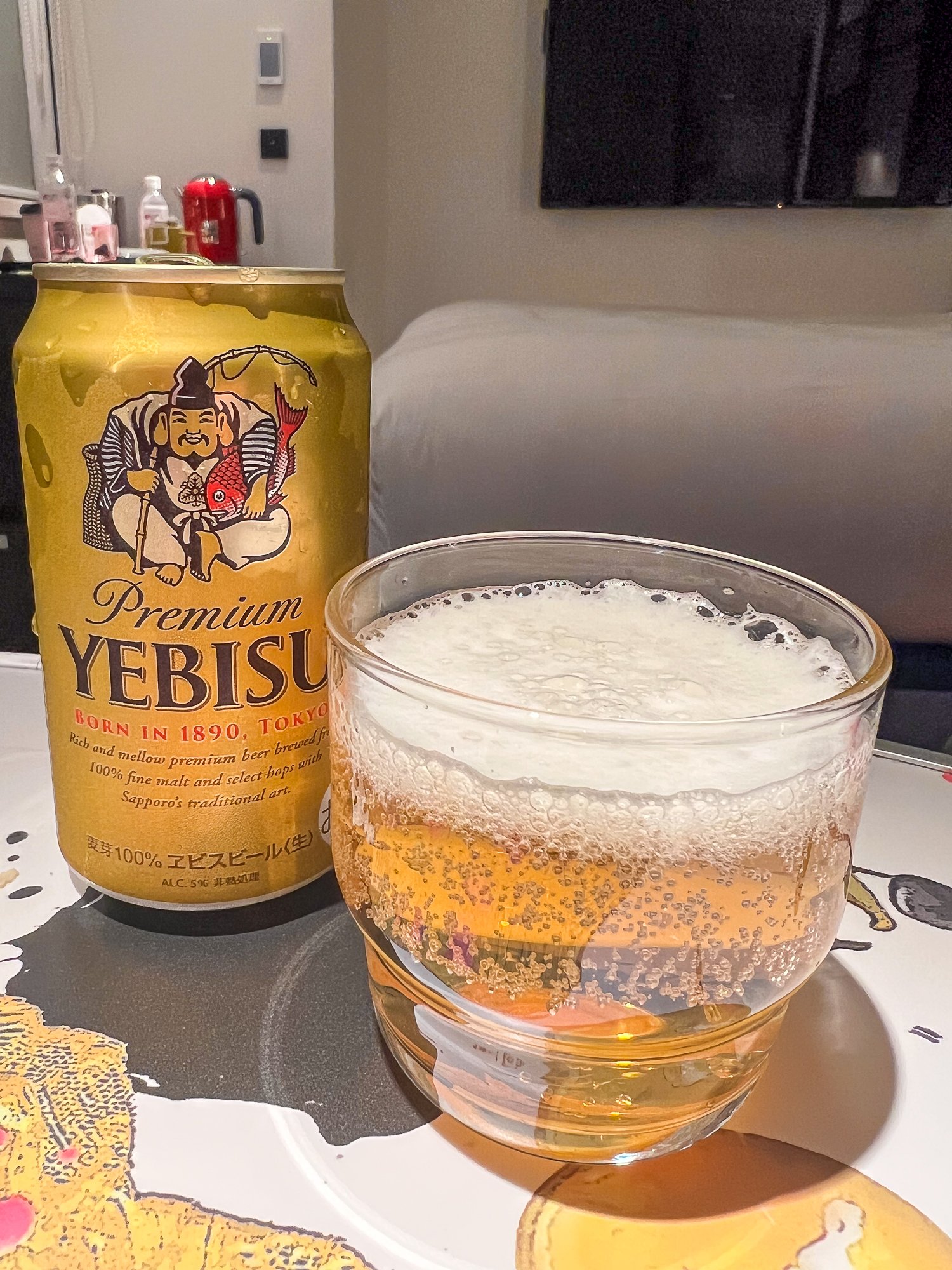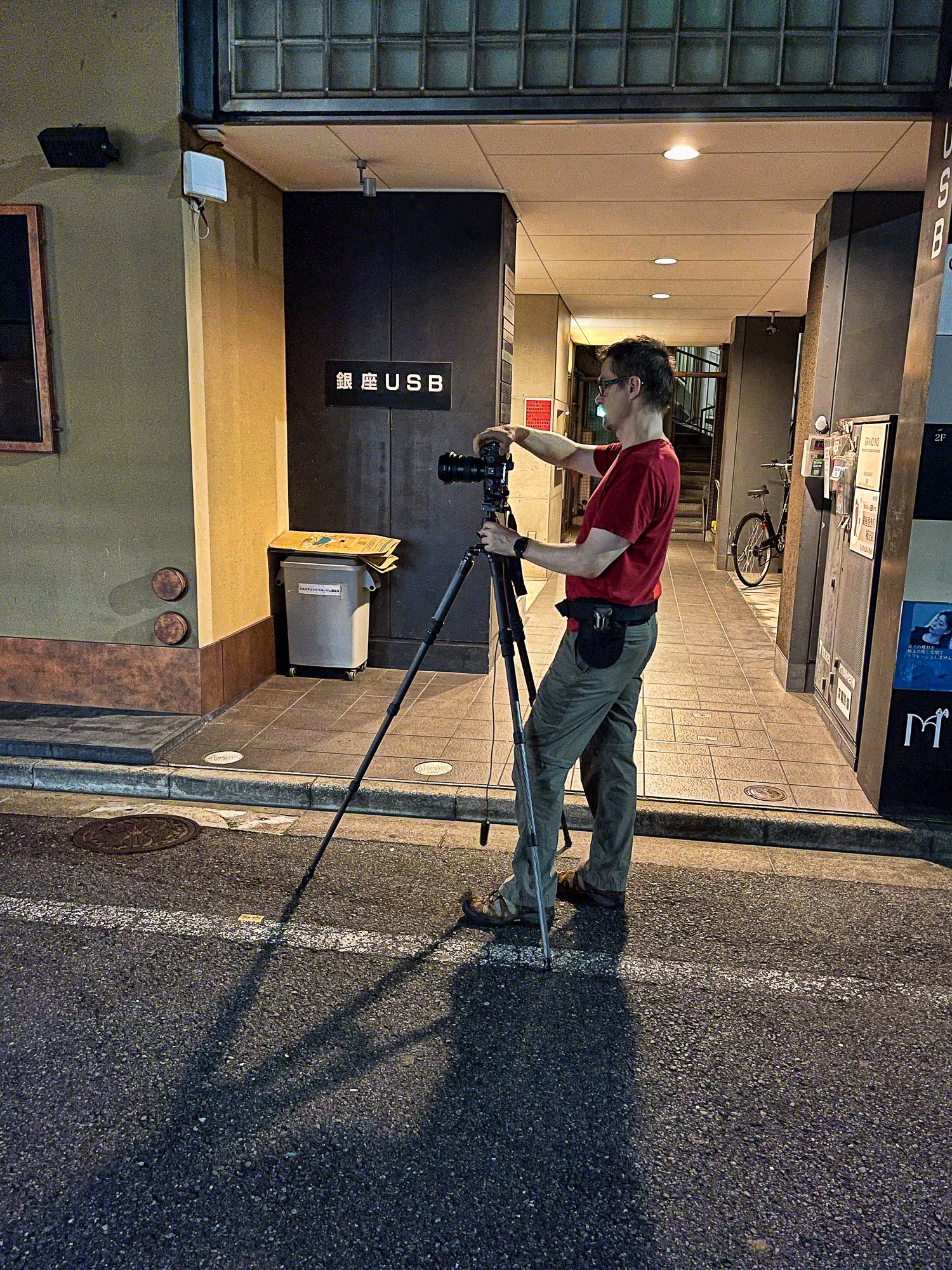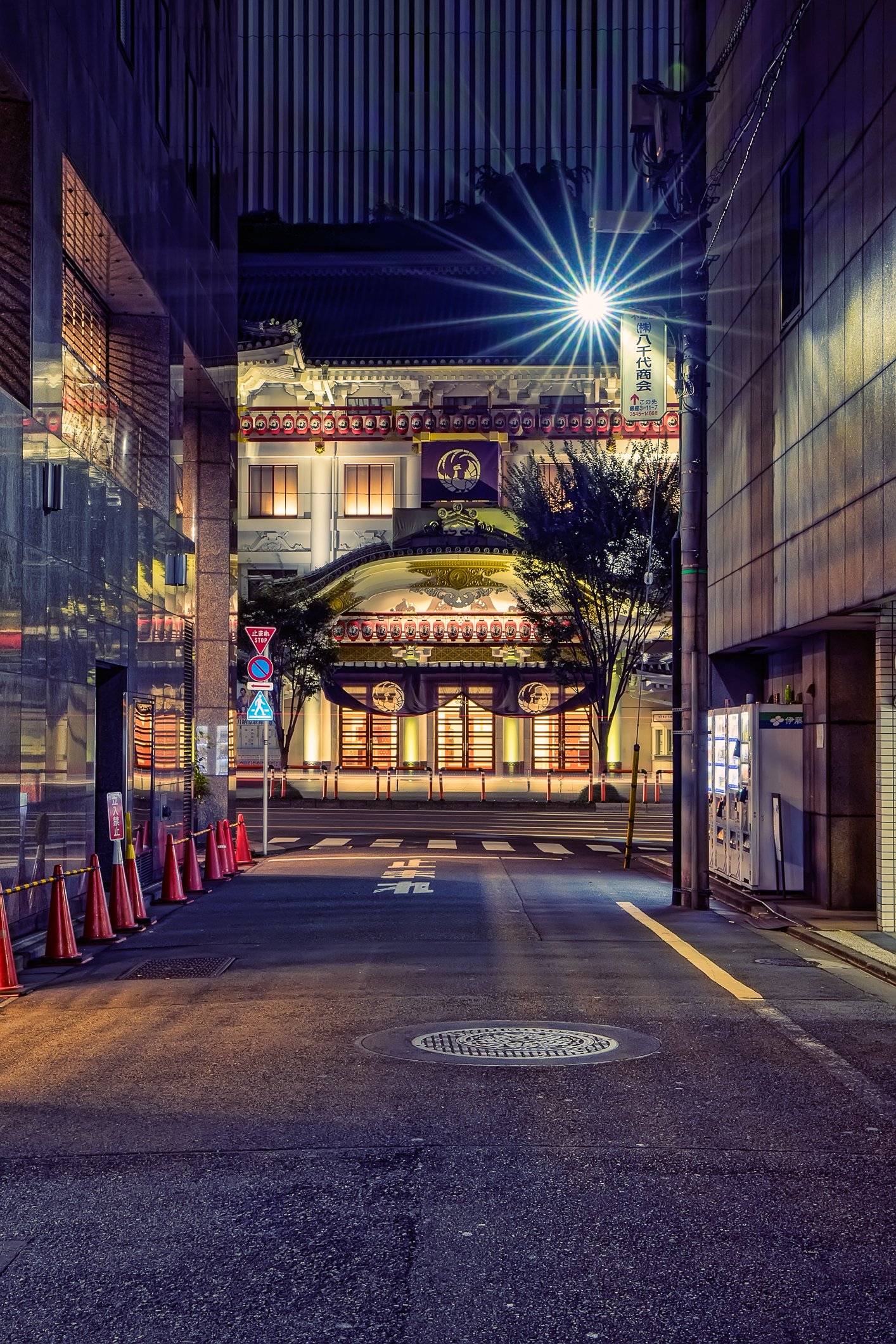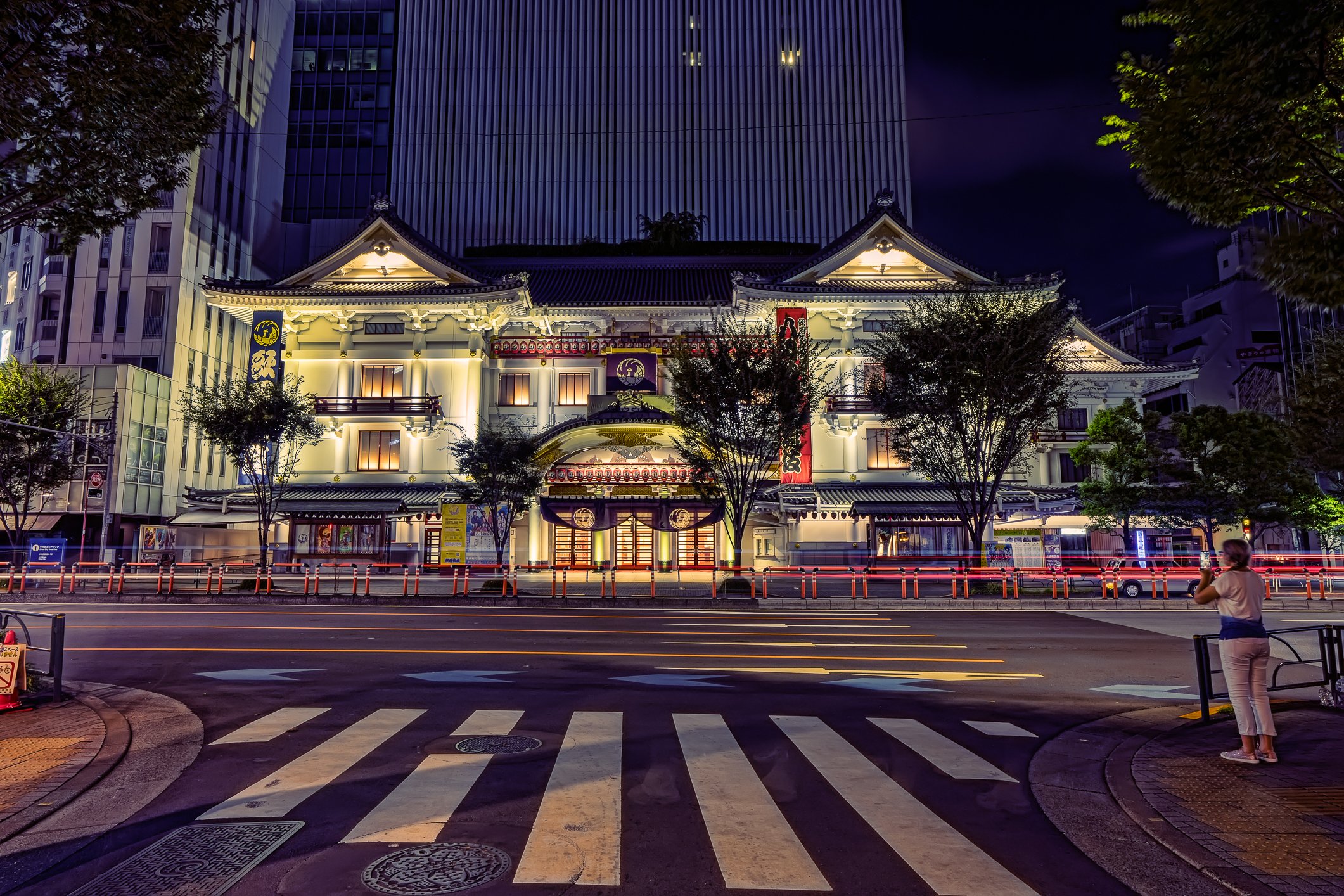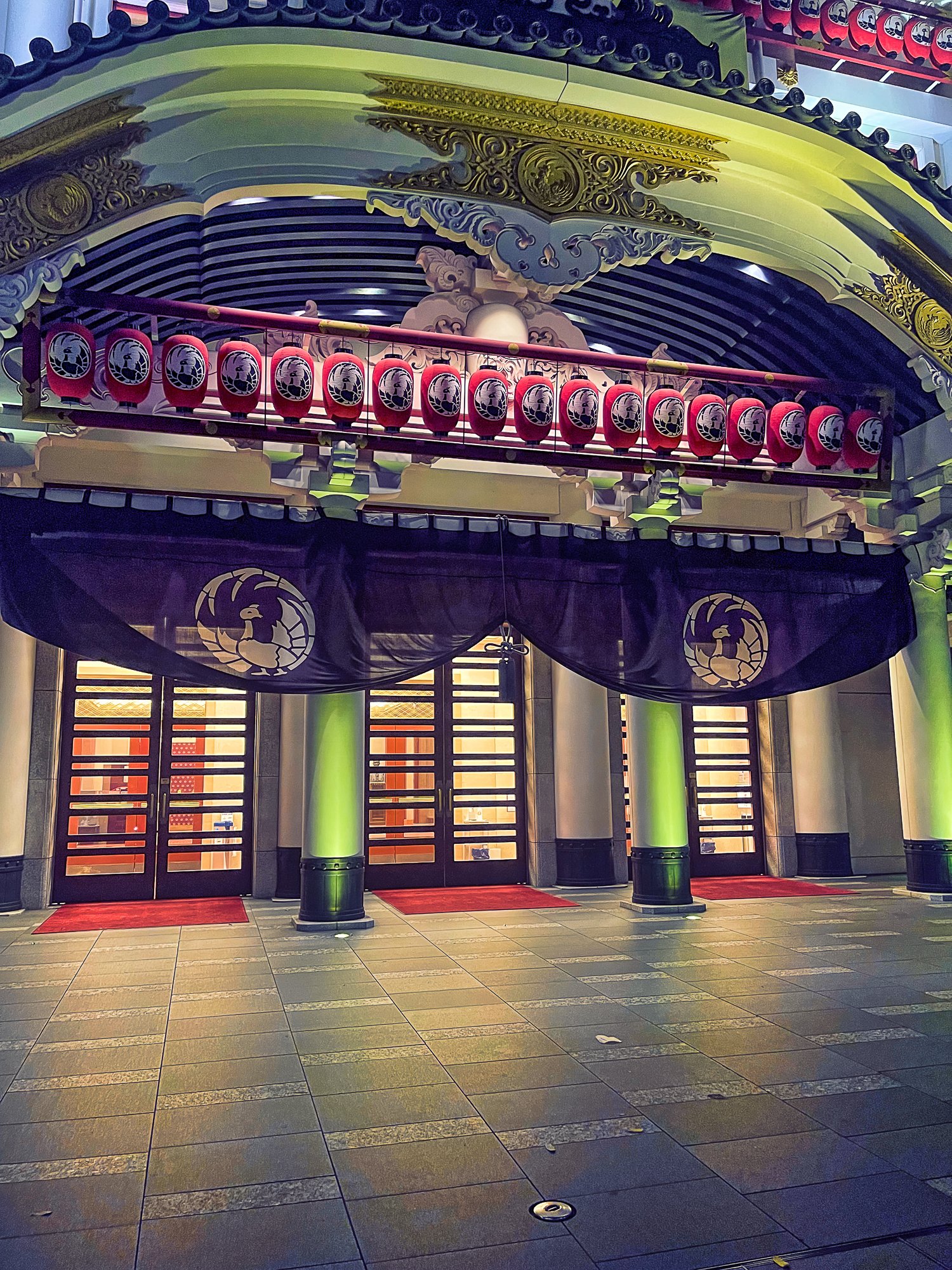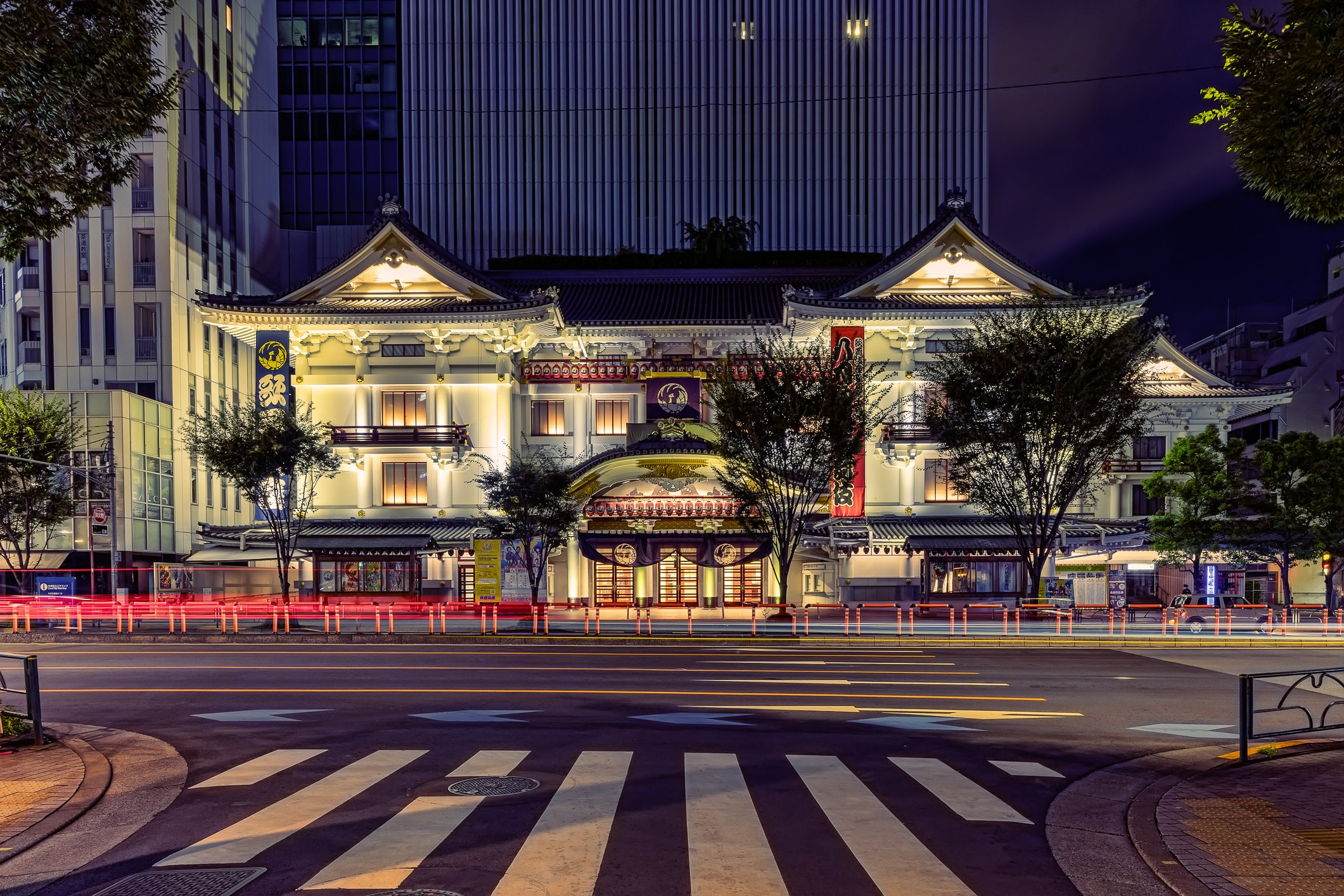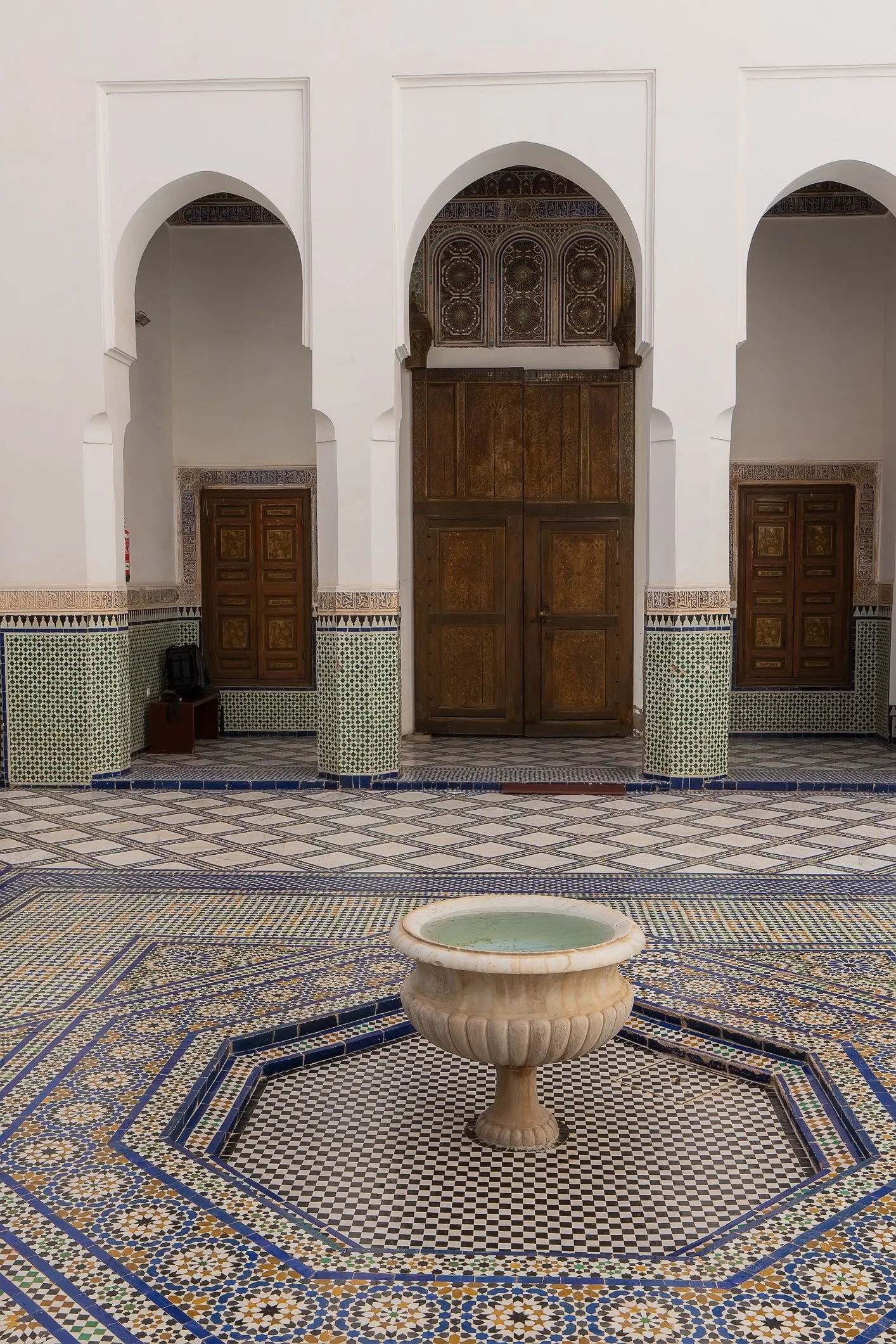Just minutes from Asakusa Station and always full of tourists, worshippers, and shoppers, Asakusa’s venerable Sensoji Temple is one of Tokyo’s major draws. It’s the oldest Buddhist temple in the capital, and its five-story pagoda, trails of incense, and vast sweeping eaves take you back to a Tokyo of centuries past. The temple is dedicated to Kannon Bosatsu, the bodhisattva of compassion.
The main hall of Sensoji has been destroyed and rebuilt many times over its 1,400-year history, due to fires and natural disasters. After it was reconstructed in 1649, it managed to survive nearly 300 years—until March 10th, 1945, when it was completely destroyed during the firebombing of Tokyo. Rebuilding it after the war became a powerful symbol of Tokyo’s rebirth.
Zaledwie kilka minut od stacji Asakusa, świątynia Sensoji zawsze tętni życiem – pielgrzymi, turyści i mieszkańcy Tokio tworzą tu nieprzerwany strumień ludzi. Sensoji, najstarszy buddyjski kompleks świątynny w Tokio poświęcony jest Kannon Bosatsu, bodhisattwie współczucia. Pięciopiętrowa pagoda, unoszący się zapach kadzideł i szerokie dachy zdają się zabierać odwiedzających w podróż w czasie.
Na przestrzeni 1400 lat świątynię wielokrotnie niszczyły pożary i trzęsienia ziemi. Od czasu odbudowy w 1649 roku główny budynek wytrwał prawie trzy wieki. Jednak 10 marca 1945 roku Sensoji spłonęła podczas nalotów na Tokio. Jej powojenna odbudowa stała się symbolem odrodzenia miasta.
As the story goes, around 628 CE, two fishermen—Hinokuma Hamanari and Takenari—pulled a small golden statue of Kannon from the Sumida River. They kept returning it to the water, but it always found its way back into their nets. Their village chief, Hajino Nakamoto, recognised its holiness and turned his home into a shrine for the statue. By 645 CE, that shrine had grown into what we now know as Sensoji—Tokyo’s oldest temple.
Another legend says that three days after the statue appeared, a golden dragon descended from the sky. Because of this, Sensoji is also known as Kinryūzan, or “Golden Dragon Mountain.” A special Golden Dragon Dance (Kinryū-no-Mai) is held each year on March 18th to commemorate this event.
Sensoji and the district around it are so closely tied that they even share the same kanji: 浅草, meaning “shallow grass.” “Sensō” is the Chinese-style reading, and “Asakusa” is the Japanese-style. When the temple was founded, this area was just a wild grassland, but thanks to the temple, Asakusa grew into a bustling center for pilgrimage and trade.
W 628 r. n.e. rybacy Hinokuma Hamanari i Takenari wyciągnęli ze Sumidy złotą figurę Kannon. Za każdym razem, gdy odrzucali ją z powrotem do rzeki, pojawiała się znów w ich sieciach. Szef ich wioski, Hajino Nakamoto rozpoznal figurę jako świętą i zbudował jej kaplicę w swoim domu – a w 645 roku ten skromny ołtarz przekształcił się w Sensoji.
Trzy dni później, według innej legendy, z nieba spadł złoty smok. Od tamtej pory świątynia bywa też nazywana Kinryūzan, czyli „Górą Złotego Smoka”. Coroczny taniec Kinryū-no-Mai, obchodzony 18 marca, upamiętnia to niezwykłe wydarzenie.
Nazwy Asakusa i Sensoji zapisuje się tymi samymi chińskimi znakami 浅草 – oznaczającymi „płytką trawę”. „Senso” to chińska wymowa, „Asakusa” to wersja japońska. Kiedy świątynia powstała, były tu tylko dzikie łąki. Dziś to tętniące centrum pielgrzymek i handlu – wszystko dzięki Sensoji.
The outermost gate of Sensoji, and easily one of Tokyo’s most photographed landmarks, is Kaminarimon. Originally built in 942 CE by military commander Taira no Kinmasa, it was later moved to its current location. Reconstructed multiple times after fires, the current version dates from 1960.
The gate’s main attraction is a magnificent huge red paper lantern, made by a Kyoto craftsman. It reads “雷門” (Kaminarimon) meaning “Thunder Gate.” The lantern stands 3.9 meters tall, 3.3 meters wide, and weighs around 700 kg. It is replaced every ten years. The intricate dragon-shaped engraving is adorning its base.
On either side of the gate stand two gods: Raijin, god of thunder (left), and Fūjin, god of wind (right) – this explains the name of the gate. They are benevolent guardians who protect the temple from storm, flood and fire. After passing through the gate, you can also see two more statues—Tenryu and Kinryu—mythical dragon gods.
Zewnętrzna brama Sensoji – Kaminarimon – to jeden z najczęściej fotografowanych symboli Tokio. Pierwotnie została zbudowana w 942, a potem przeniesiona w obecne miejsce. Kilkakrotnie odbudowywana po pożarach, dzisiejsza wersja bramy pochodzi z 1960 roku.
W jej centrum wisi ogromna czerwona papierowa latarnia wykonana przez rzemieślnika z Kioto. Napis „雷門” (Kaminarimon) oznacza „Bramę Piorunów”. Latarnia ma 3,9 m wysokości, 3,3 m szerokości i waży ok. 700 kg. Wymieniana jest ona co 10 lat. Na jej spodzie znajduje się precyzyjnie wyrzeźbiony smok.
Po obu stronach latarni stoją bogowie Raijin (bog piorunow, z lewej) i Fūjin (bóg wiatru, z prawej), co wyjaśnia nazwę bramy. To opiekuńcze bóstwa chroniące świątynię przed pożarem, powodzią i burzami. Po przejściu przez bramę można też zobaczyć po drigej stronie rzeźby dóch smoczych bóstw – Tenryu i Kinryu.
Looking to the opposite direction from the gate you can spot the Asakusa Tourist Center—which we plan to visit next time.
Patrząc z bramy w kierunku przeciwnym do świątyni, widać Centrum Turystyczne Asakusa – planujemy je odwiedzić przy innej okazji.
The Kaminarimon gate opens onto Nakamise-dōri, one of Japan’s oldest shopping streets. It dates back to the late 1600s and was originally created to serve visiting pilgrims. It runs for about 250 meters straight toward the temple.
About 90 small shops line both sides of the street, selling souvenirs, handmade crafts, sweets, and traditional snacks. We arrived early, before the stalls opened, so we could see the beautifully painted shutters and enjoy the quiet before the crowds arrived.
Brama Kaminarimon prowadzi prosto na Nakamise-dōri – jedną z najstarszych ulic handlowych w Japonii. Powstała pod koniec XVII wieku, by obsługiwać pielgrzymów odwiedzających świątynię. Ma około 250 metrów długości i prowadzi prosto do głównej sali.
Po obu stronach ulicy znajduje się około 90 niewielkich sklepików z pamiątkami, rękodziełem, słodyczami i lokalnymi przekąskami. Dotarliśmy tu dzisiaj wcześnie rano, zanim stragany się otworzyły, aby zobaczyć malowidła na zamkniętych roletach i obejrzeć świątynię przed napływem turystów.
At the end of Nakamise-dōri stands the massive Hōzōmon gate, originally built in 942 and rebuilt in reinforced concrete in 1964. It’s the inner gate into the temple and stands 22.7 meters tall. It’s a two-story structure.
On the ground level are two massive Nio (the guardian deities of the Buddha) statues (each 5.45 m tall), three lanterns, and two giant straw sandals that weigh 400 kg each. These sandals are offerings from Maruyama City, to symbolically protect the temple from evil. They are made every ten years and it takes 800 people 18 months to weave them. The largest and most prominent lantern is a red chochin that hangs under the centre of the gate's opening. With a height of 3.75 m, a diameter of 2.7 m and a weight of 400 kg, the main lantern displays the name of the town Kobunachō because this is the name of the Tokyo district that donated the lantern in 2014. On either side of the chōchin hangs two 2.75 metre-tall copper toro lanterns weighing approximately 1000 kg each.
The upper level stores valuable temple relics, safe from fire thanks to the concrete structure.
Na drugim końcu Nakamise-dōri znajduje się potężna (22.7 m wysokości) brama Hōzōmon, pierwotnie wzniesiona w 942 roku i odbudowana z betonu w 1964. Jest to główna wewnętrzna brama prowadząca do świątyni.
Brama jest konstrukcją dwupoziomową. Na parterze znajdują się dwie ogromne rzeźby Nio – strażników Buddy (każda figura ma 5,45 wyskości), trzy lampiony oraz dwa gigantyczne słomiane sandały dla Nio, ważące po 400 kg każdy. Sandały te to dar od miasta Maruyama, który ma symbolicznie ochraniać świątynię od złego. Są one wymienianie co 10 lat a ich przygotowywanie zajmuje 800 osobom 18 miesięcy. Największy i najbardziej widoczny lampion to czerwony chōchin, który wisi pośrodku. Ma on 3,75 metra wysokości, 2,7 metra średnicy i waży 400 kg. Na latarni widnieje nazwa miasta Kobunachō – to nazwa tokijskiej dzielnicy, która podarowała ją świątyni w 2014 roku. Po obu stronach chōchina wiszą dwie miedziane latarnie typu tōrō, każda o wysokości 2,75 metra i wadze około 1000 kg.
Na górnym poziomie przechowywane są cenne relikwie świątynne – bezpieczne dzięki ognioodpornej konstrukcji.
After passing through Hōzōmon, visitors enter the heart of the temple grounds. Directly ahead stands the Main Hall, with the five-storied pagoda off to the left.
Many people stop first at the purification fountain, or chozuya, where they wash their hands and rinse their mouths—a symbolic act of cleansing before approaching the sacred. It’s not mandatory, but many still follow this ritual.
The Main Hall is also called Hondō, or Kannon-dō, as it houses the statue of Kannon—the Goddess of Mercy. But you won’t see her. The statue has been kept hidden from public view since the 7th century, said to be so sacred that revealing it brings misfortune.
Visitors offer prayers by tossing a coin, bowing, clapping twice, and bowing again. Some also light incense at the jokoro (incense burner), waving the smoke toward themselves for good health and blessings.
Po przejściu przez Hōzōmon wchodzimy do serca kompleksu świątynnego. Na wprost znajduje się główny budynek świątyni, a po lewej stronie – pięciopiętrowa pagoda.
Większość odwiedzających zatrzymuje się najpierw przy fontannie oczyszczania, zwanej chozuya, by obmyć dłonie i przepłukać usta – symboliczne oczyszczenie przed podejściem do świętego miejsca. Choć nie jest to obowiązkowe, wiele osób wciąż kultywuje ten rytuał.
Główna Sala to inaczej Hondō albo Kannon-dō, ponieważ mieści ona posąg bogini Kannon – bogini miłosierdzia. Ale tego posągu nie zobaczymy. Jest on ukryty przed światem od VII wieku – mówi się, że jest tak święty, iż jego ujawnienie przynosi nieszczęścia i pecha.
Odwiedzający modlą się, wrzucając monetę, kłaniając się, dwukrotnie klaszcząc i znowu się kłaniając. Wielu zapala też kadzidła w jokoro (kadzielnicy), wachlując dym w swoją stronę, co ma przynieść zdrowie i błogosławieństwo.




























































